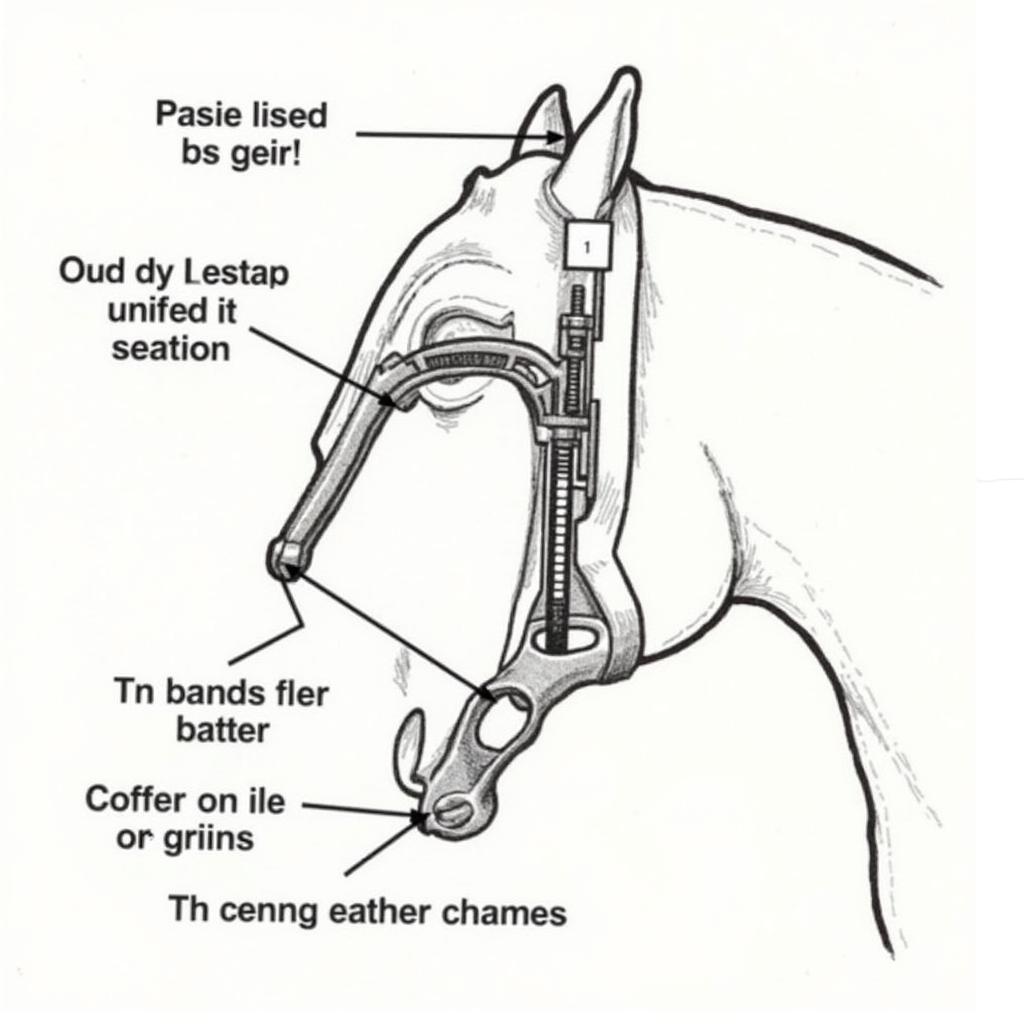The Horse Shoe Shifter, a unique and often sought-after gear shift lever, brings a touch of equestrian flair to any vehicle. This article will delve into the intricacies of the horse shoe shifter, exploring its history, functionality, installation, and appeal.
A Look Back at the Horse Shoe Shifter’s Origins
The horse shoe shifter isn’t a recent invention. Its roots can be traced back to the early days of automobiles, when connections to the equestrian world were more common. While the exact origins remain somewhat obscure, the design likely emerged as a way to add a familiar and comfortable feel for drivers transitioning from horse-drawn carriages to motorized vehicles. This nostalgic link to the past continues to be a significant part of the horse shoe shifter’s allure.
How Does a Horse Shoe Shifter Work?
 Horse Shoe Shifter Mechanism Diagram
Horse Shoe Shifter Mechanism Diagram
Functionally, a horse shoe shifter operates much like any other manual gear shift lever. It’s connected to the vehicle’s transmission via a linkage system. Moving the shifter through its gate pattern engages different gears. The unique horseshoe shape simply provides a distinctive grip and aesthetic. Some horse shoe shifters incorporate buttons for engaging reverse gear, adding another layer of functionality.
Installing a Horse Shoe Shifter: A Step-by-Step Guide
Installing a horse shoe shifter can vary in complexity depending on the vehicle and the specific shifter model. However, the general process usually involves the following steps:
- Removing the existing shifter: Disconnect the linkage and remove the old shifter knob and boot.
- Installing the new shifter base: Securely mount the new horse shoe shifter base to the transmission tunnel.
- Connecting the linkage: Carefully connect the shifter linkage to the new shifter base, ensuring proper alignment.
- Installing the horse shoe handle: Attach the horse shoe shaped handle to the shifter base.
- Testing the shifter: Run through the gears to ensure smooth operation and proper engagement.
While this is a simplified overview, it’s always recommended to consult the manufacturer’s instructions for your specific horse shoe shifter model.
Why Choose a Horse Shoe Shifter?
“The horse shoe shifter offers a tangible connection to automotive history, transforming a mundane driving experience into something special,” says John Riley, a classic car restoration expert.
The horse shoe shifter’s appeal goes beyond mere functionality. It’s a statement piece, a conversation starter, and a reflection of individual style. For many, it’s a way to personalize their vehicle and express their appreciation for classic design. “The tactile feel of the horseshoe in your hand is a constant reminder of the artistry and craftsmanship of a bygone era,” adds Sarah Mitchell, automotive historian and author of “Shifting Gears: A History of Automotive Transmission Design.”
The Horse Shoe Shifter in Modern Vehicles
While often associated with classic cars, the horse shoe shifter can also find a place in modern vehicles. Custom fabrication and adaptation can allow for its integration into various makes and models. This offers a unique way to blend vintage charm with contemporary automotive technology.
Conclusion
The horse shoe shifter, with its historical roots and distinctive design, offers a unique way to enhance the driving experience. Whether you’re restoring a classic car or adding a touch of personal flair to a modern vehicle, the horse shoe shifter is a compelling choice. It blends functionality, aesthetics, and a connection to automotive heritage.
FAQ
- Are horse shoe shifters universal? No, they are not universally compatible. Different models are designed for specific transmissions.
- Can I install a horse shoe shifter myself? Installation can be a DIY project with mechanical skills, but professional installation is recommended for complex setups.
- Where can I purchase a horse shoe shifter? They are available from automotive parts retailers, online marketplaces, and specialty shops.
- What materials are horse shoe shifters made of? Common materials include chrome, aluminum, stainless steel, and even wood or leather for the grip.
- Are horse shoe shifters legal? Generally, yes. However, it’s essential to ensure the shifter complies with local regulations regarding vehicle modifications.
- Do horse shoe shifters affect driving performance? No, they primarily affect the aesthetic and feel of shifting, not the vehicle’s performance.
- Are horse shoe shifters more difficult to use than traditional shifters? Not necessarily. The shifting pattern is usually the same, just with a different handle.
Need support? Contact us at Phone Number: 0772127271, Email: [email protected] Or visit us at QGM2+WX2, Vị Trung, Vị Thuỷ, Hậu Giang, Việt Nam. We have a 24/7 customer service team.